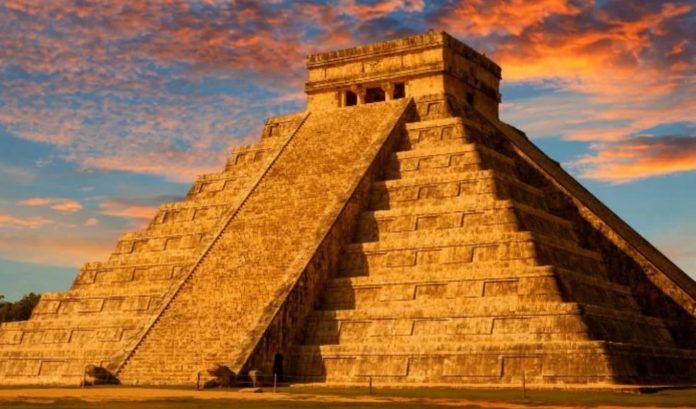From around 1000 B.C. until A.D. 1500, the Maya built hundreds of pyramids throughout Mesoamerica, filling them with a diverse array of artifacts.
But, more importantly, what did they put inside of them?
The Maya pyramids, like the Egyptian pyramids, were discovered to contain valuable treasures and burials. According to scientists, however, these structures frequently hid something even more peculiar: tiny pyramids nested within the bigger ones.
For example, the massive Kukulkan pyramid in eastern Mexico – one of the most iconic pyramids in the world – was built like a Russian nesting doll, and contains two smaller pyramids hidden within its walls.
Andres Tejero-Andrade, a professor at the National Autonomous University of Mexico (UNAM) said that the people who lived on the Yucatán Peninsula in the past did not destroy the old buildings when they came to a site that had been inhabited and then left empty.
“Rather a new one was built on top of those already present, and so on,” he explained, noting that this is why El Castillo has this nesting doll structure.”
According to Denisse Lorenia Argote Espino, a researcher at Mexico’s National Institute of Anthropology and History (INAH), this layout is not unique to El Castillo. Other Maya and non-Maya pyramids feature the same design.
Building a pyramid on top of another pyramid “was a common practice in pre-Hispanic [before the Spanish arrived] times,” according to Espino, and “the main structures in long settlements [sites that were inhabited for a long time] usually have several constructive phases.”
Pyramid stacks, however, aren’t the most typical feature archaeologists discover in Maya pyramids. Some Maya temples were intended for rituals, while others were used as graves for monarchs or other powerful people.
According to Michael Coe’s book “The Maya (Thames & Hudson, 2011),” these tombs contained objects such as jade masks (for the deceased), jade beads, obsidian knives, and stingray spines, which were a symbol of self-sacrifice for the ancient Maya.
Because stingray spines were sometimes pushed “through ears, cheeks, lips, tongue, and the penis, the blood being spattered on the paper used to [anoint] idols,” Coe said in his book, they were associated with self-sacrifice.
Objects made of jade were treasured by the Maya in ancient times. A jaguar throne unearthed in the El Castillo pyramid is one of the most notable specimens.
In a 2005 paper published in the journal Ancient Mesoamerica, Karl Taube, an anthropology professor at the University of California, Riverside, wrote, “The Classic Maya esteemed jadeite not only for its preciousness and beauty but also as stone of great symbolic import.”
According to Taube, the Maya equated jade with maize, rulership, and the wind itself. He continued, “Jade was an important component of funerary rites and the ritual conjuring of gods and ancestors.”
More artifacts from the Maya civilization
Many additional fascinating artifacts were discovered in the Maya pyramids. For example, a pyramid in northern Guatemala’s San Bartolo has a shard of what may be the world’s oldest Maya calendar, dating back more than 2,200 years.
A large inscription engraved on the stairs of a pyramid in Copan, Honduras, contains more than 2,000 Maya glyphs. According to a 2006 Getty Conservation Institute assessment, the inscription relates the story of Copan’s monarchs. The Maya used a writing system termed “Mayan hieroglyphic” by some. This writing system uses glyphs to represent sounds, which are then combined to make words that can be read and translated by scholars.
Image Credit: Getty
You were reading: What secrets lie within the ancient Maya pyramids?
